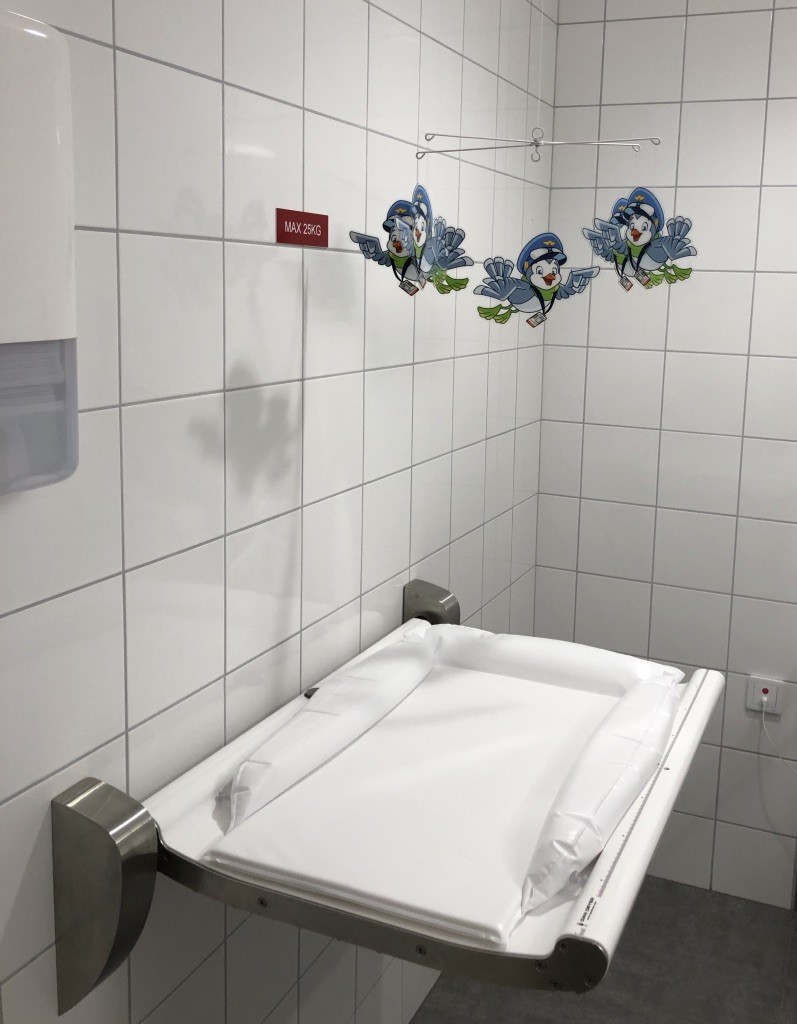
Reading time: 5 minutes
Stakeholders expect substance and they will move away when there’s none
Becoming a dad changed my experience with public diaper changing stations dramatically. Overnight it went from non-existent to highly frequent. So now that I’m kind of an authority on the issue, I would like to show you two different diaper changing stations.
Why, you may ask. Well. I believe it will illustrate why substance matters to your positive impact journey. Because it does matter. Lack of substance will make you fumble. And very publicly too.
Omnipresence
Some context first. Purpose and positive impact are booming. Many organizations share their aspirational goals but the next step, to actually set things in motion, proves to be challenging. In part because social and environmental impact are broad topics that touch all organizational levels. From the C-suite all the way down to the frontline. The same is true for all business functions from cost accounting to marketing and everything in between.
Positive impact therefore requires actions of all. To achieve the much needed organizational consistency, those actions need to reinforce and build upon each other. And that is why talent and leadership needs to be aligned on a deeper level. Which requires a culture that supports and guides desired actions.
Knowing positive impact is omnipresent and deeply engrained in an organization, I want to turn to product design. This might help answer the question, is your organization willing and able to shape itself in a way that truly enables positive impact?
Spot the differences
Let’s take a closer look at two different diaper changing stations. One at a Swedish airport and another at a lunch place close to our home in the Netherlands. On a side note. These examples are from before Covid-19 spread throughout our global community.
Welcome to Sweden

First the airport facility. The station is in a spacious room that can be locked. So, we were not disturbed in what sometimes can be a loud and tricky undertaking. The mobile above the diaper station instantly calmed our son, the station’s height was spot on and impeccably clean, paper towels were easily within reach and there’s a water basin and soap inside this room. From a usability point of view, it’s a father’s dream come true.
Very cozy
Next up, the lunch place. The station is in a hallway with people constantly passing. This leads to all the distractions that make a one-year-old likely to react and move. The textile cover doesn’t strike me as very hygienic, there are no cleaning facilities such as a water basin or paper towels and the station is just below an unprotected electrical outlet.
The design of the station blends in with the lunch place, so it keeps its overall coziness and inviting vibe. Its main purpose seems to be not to alter the look and feel. I would call it a “we can say we have one” station. Do I like to use it? No, I prefer not.

Positive impact is as public as a public diaper changing station
This example underscores that product design is about making choices and rigorously translating those into all details. It also shows that there’s a big difference between something that’s well designed and poorly designed.
To me the same is true for designing your positive impact journey. Because positive impact is as public as a public diaper changing station. As a result, your stakeholders will notice when you have a “we can say we have a” positive impact journey. They expect substance and will move away when there’s none.
No substance no glory
My advice is to stop for a moment and reflect on your current and desired impact. Are you willing to make the organizational and business changes needed to move forward? How are you going to invigorate your organization? What kind of culture will lead to the desired mindset, ideas and behavior? Think it through, provide substance and accelerate your positive impact.

 English | EN
English | EN 